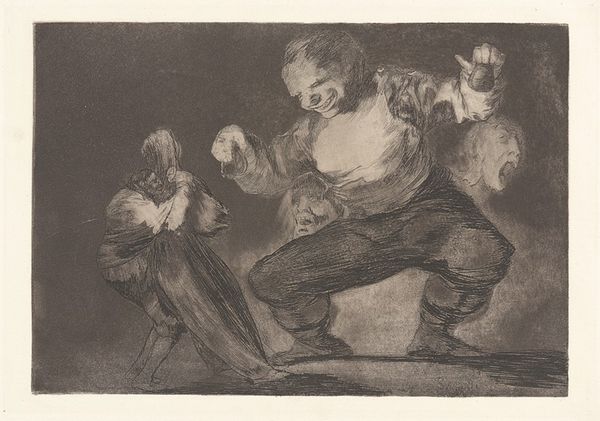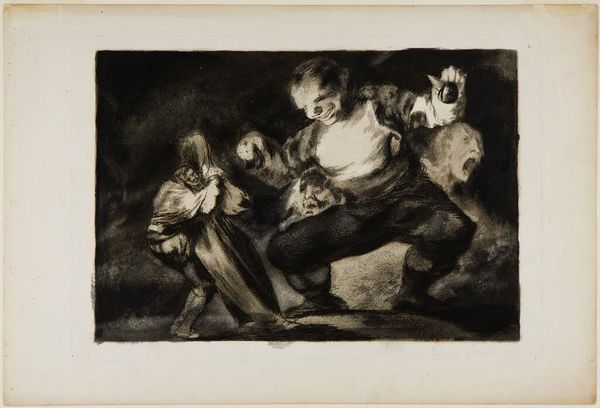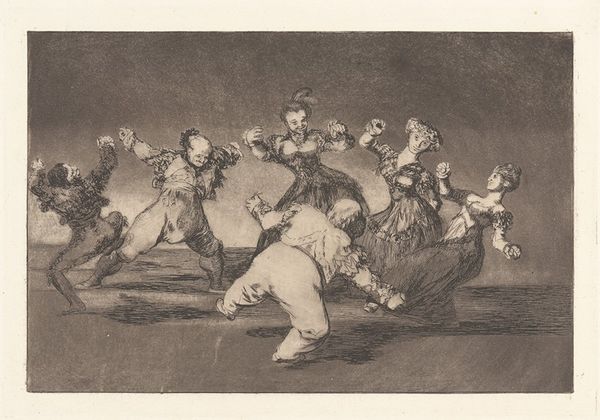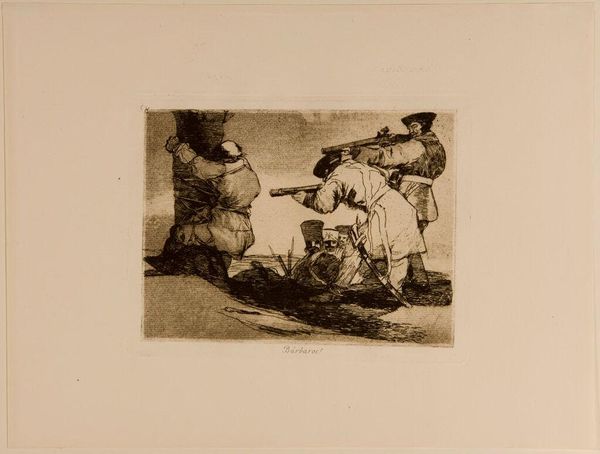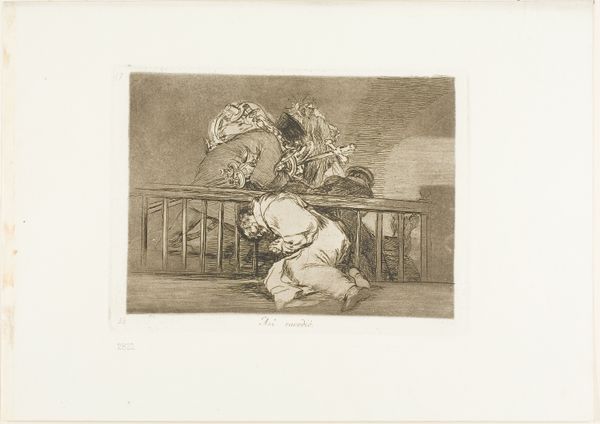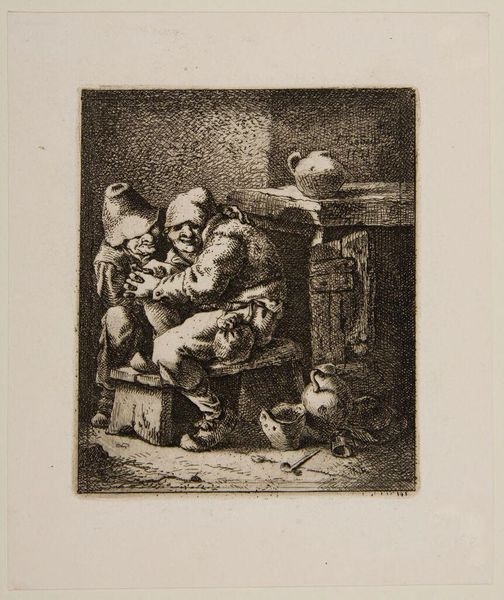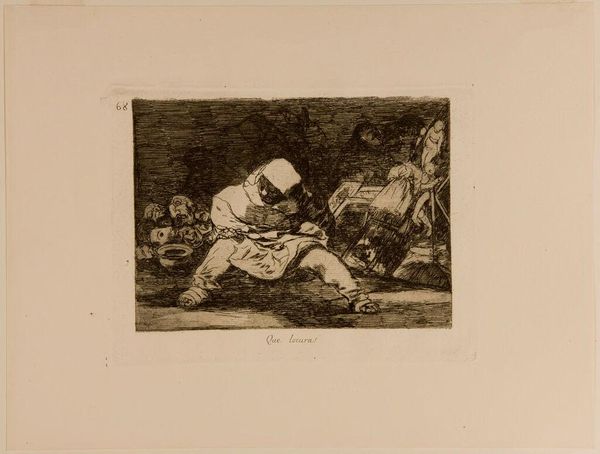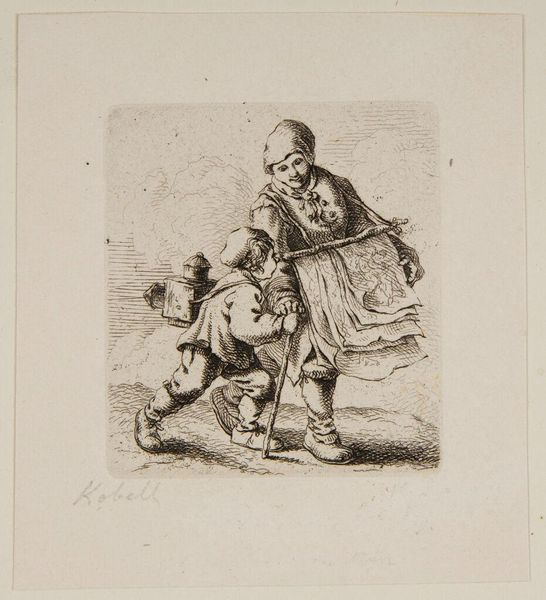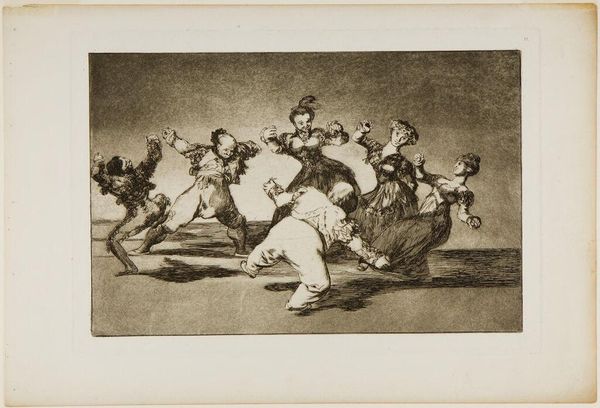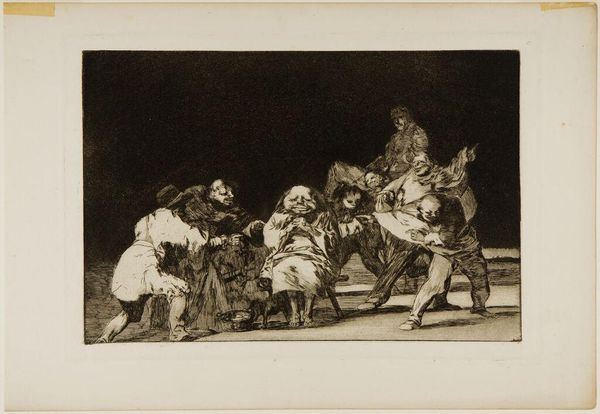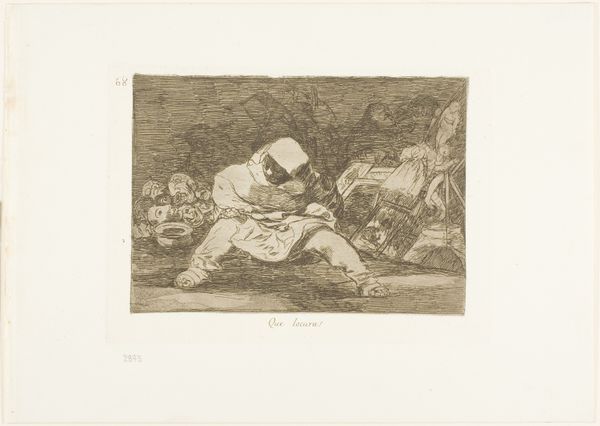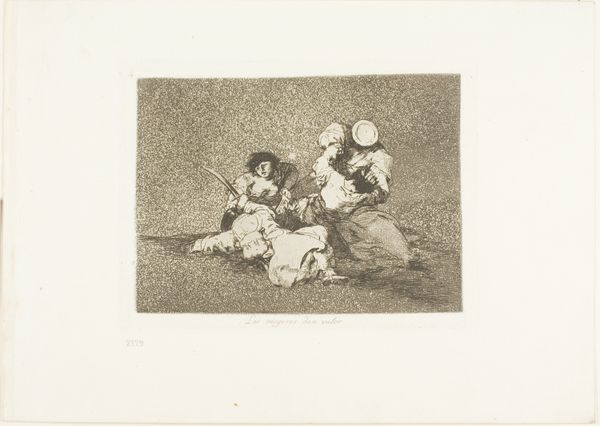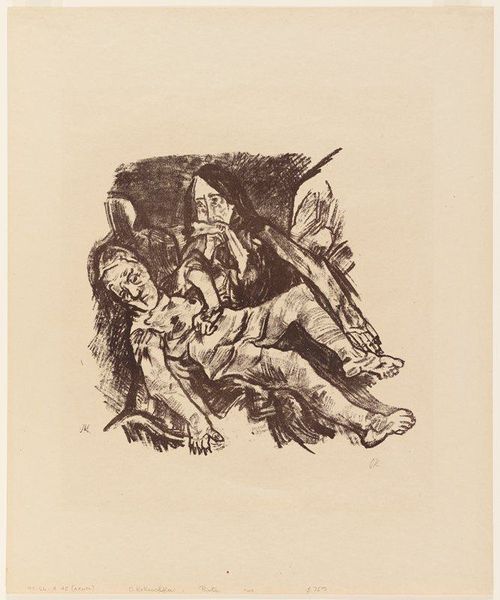
After Vice Comes Fornication: Simpleton 18th-19th century
0:00
0:00
Copyright: CC0 1.0
Editor: This is Goya's "After Vice Comes Fornication: Simpleton," held at the Harvard Art Museums. It feels like a chaotic nightmare, with figures emerging from the darkness. What kind of symbolism do you see at play here? Curator: Goya understood the power of archetypes. The central figure, almost clown-like, yet menacing, embodies a grotesque distortion of pleasure. Notice how the surrounding faces express anguish. What do they represent to you? Editor: Perhaps the consequences, the internal and external suffering caused by unchecked desires? Curator: Precisely. The print becomes a mirror reflecting the shadow self, the part of us we often deny. Consider how it resonates even today. Do we still grapple with similar themes of excess and its repercussions? Editor: It definitely makes you think about the cyclical nature of these struggles. Thanks, I never thought of it that way! Curator: The lasting power of visual symbols to convey the human condition is a testament to Goya’s genius.
Comments
No comments
Be the first to comment and join the conversation on the ultimate creative platform.
